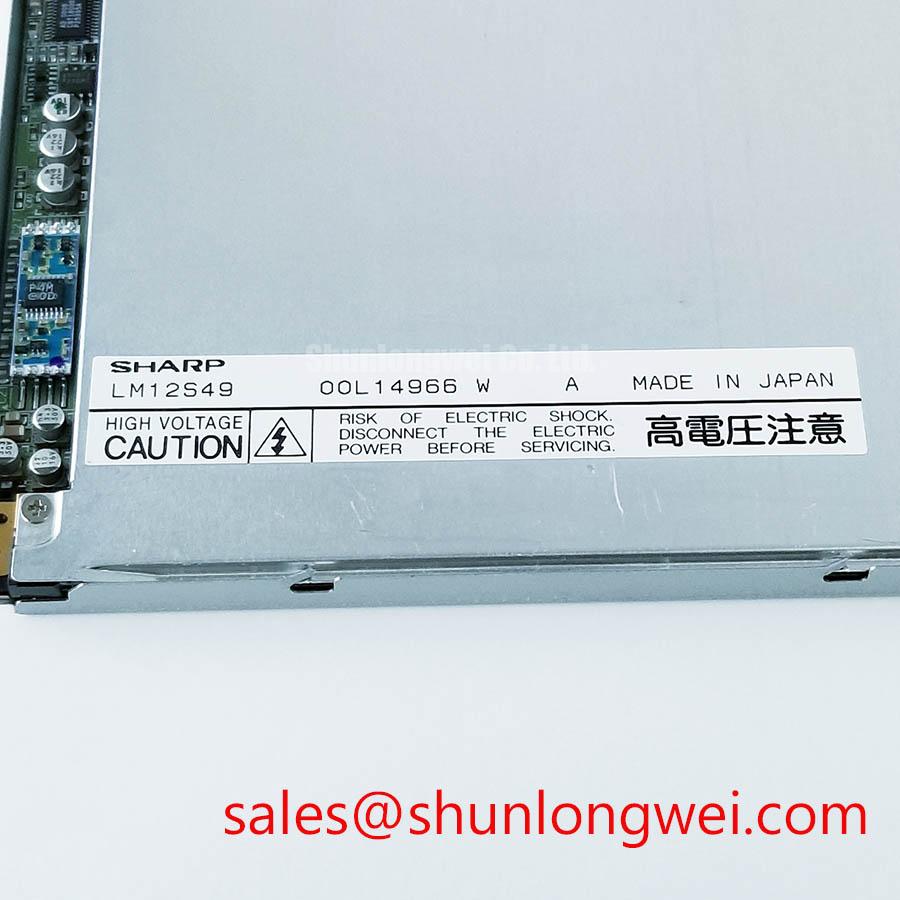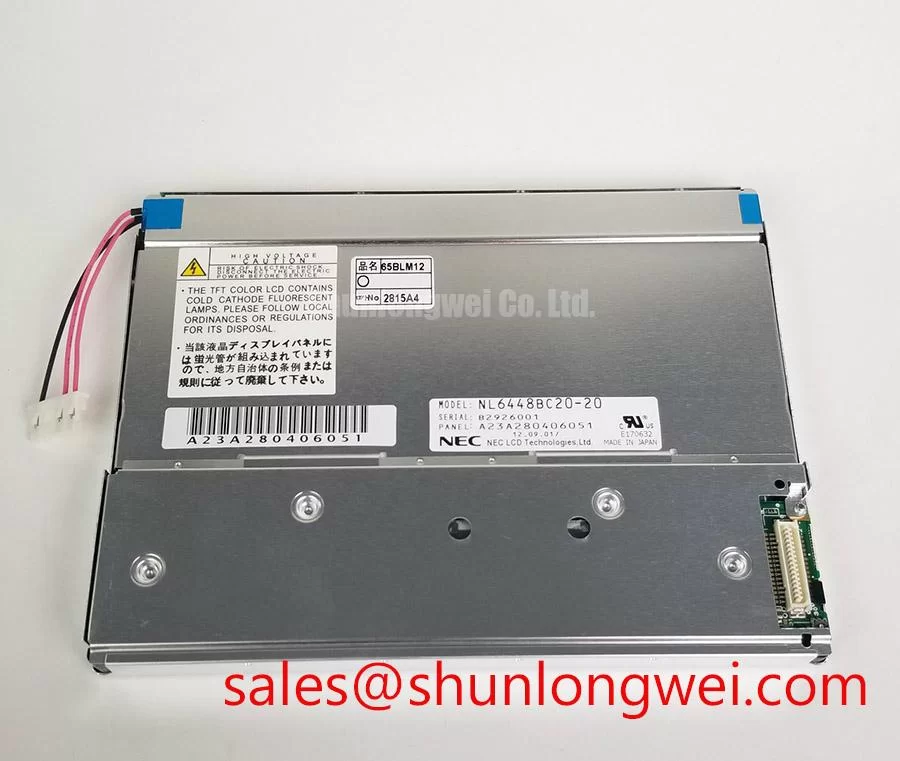In-Depth Comparative Analysis of LM12S49 Sharp CSTN-LCD and NL6448BC20-20 NEC a-Si TFT-LCD Displays
Industrial buyers and electronic engineers are increasingly confronted with the challenge of selecting the optimal industrial-grade LCD for demanding environments. Today’s discussion provides a comprehensive LCD display comparison between the LM12S49 Sharp CSTN-LCD, a legacy 12.1-inch solution, and the NL6448BC20-20 NEC a-Si TFT-LCD, a robust 6.5-inch module. By dissecting technical parameters, real application scenarios, and considering prevailing trends such as Mini LED display integration and high-brightness solutions, this article aims to empower manufacturers, purchasing managers, and system designers with actionable insights for informed selection.

Technical Specifications in Context: Key Differences Unveiled
Size & Resolution
The LM12S49 Sharp offers a large 12.1-inch panel with an 800(RGB)×600 SVGA resolution, targeting applications where extensive data visualization is crucial—think HMI interfaces for industrial control or medical monitoring. Conversely, the NL6448BC20-20 by NEC employs a 6.5-inch display at 640×480 (VGA), suitable for compact equipment needing moderate detail, such as portable diagnostics or point-of-sale terminals.
Panel Technology
The LM12S49 utilizes CSTN-LCD technology, known for low power consumption but generally exhibiting slower response times and reduced color vibrancy compared to newer technologies. The NEC NL6448BC20-20 leverages a-Si TFT-LCD, reflecting industry movement towards higher clarity, faster response, and richer color gamut—critical as industrial automation increasingly demands UI responsiveness akin to consumer electronics standards.
Performance Metrics
- Brightness: 185 cd/m² (LM12S49) vs an impressive 650 cd/m² (NL6448BC20-20).
- Contrast Ratio: 40:1 for CSTN-LCD vs 600:1 for TFT-LCD, indicating sharper visual separation for NEC’s solution.
- Viewing Angles: LM12S49 is quite limited (typ. 30/30/15/25°), while NL6448BC20-20 achieves broader coverage (80/80/80/60°, CR≥10), supporting more flexible mounting options—a critical need as factory floors become more modular.
- Response Time: An evident gap—LM12S49 lags with 220/80 ms (Tr/Td), while NL6448BC20-20 excels at just 6/19 ms, reducing motion blur in real-time feedback systems.
Innovation and Market Trends Shaping LCD Module Selection
The LCD market is rapidly evolving, particularly as Mini LED and Micro LED production scales up, triggering a ripple effect among traditional modules. While these emerging technologies deliver quantum leaps in peak brightness and efficiency, mainstream CSTN and TFT-LCD panels persist due to proven reliability, lower cost, and broad supply chain support. For example, BOE’s recent R&D pushes in high-brightness commercial displays and LG Display’s expansion in automotive-grade TFT-LCDs reinforce the longevity of traditional LCDs in industrial, medical, and automotive segments, even as flagship devices shift to newer backlighting architectures.

Scenario-Based Application: Value in Real-World Deployments
A closer look at deployment contexts further clarifies each model’s value proposition. The high-resolution, larger-scale LM12S49 fits best in stationary HMI terminals, where detailed visualization, such as process schematics or fault tracing, is paramount, and screen updates are relatively static—mitigating the impact of slower CSTN response. Its integrated MEMC circuit for 120Hz/240Hz operation may benefit environments needing smooth transitions, but overall speed limitations persist.
By contrast, the NL6448BC20-20 has proven its worth in outdoor control units, rugged industrial machinery, and transportation interfaces where rapid feedback and clarity under high ambient light (thanks to its 650 cd/m² brightness and anti-reflection coating) are essential. Here, the wide viewing angle supports simultaneous monitoring by multiple operators at different angles, a common requirement in factory automation or cockpit displays.
Emerging Application Demands: Flexibility, Transparency, and the Next Wave
As the electronics industry champions novel use cases—such as transparent displays for heads-up industrial overlays or flexible modules for curved instrumentation—the design limitations of CSTN become more apparent. The push by panel giants like Samsung Display towards high-refresh-rate, ultra-brightness industrial LCDs opens new paths in smart transportation and advanced medical imaging, where TFT-LCDs’ speed and color performance directly enable breakthrough applications. In these cases, picking a contemporary TFT-LCD, even without full Mini LED backlighting, delivers future-ready compatibility and reliability.
Strengths, Weaknesses, and Optimal Usage Scenarios
LM12S49 Sharp CSTN-LCD
- Strengths: Large display area, integration-friendly for legacy interfaces (CMOS/TTL), cost-effective, and sufficient for static image-heavy, low-refresh-demand industrial computers.
- Limitations: Slow response, low brightness and contrast, restricted angles; not suitable for sunlight readability or motion-intensive UIs.
- Best fit: Traditional HMI, lab instrumentation, controlled-light environments.
NL6448BC20-20 NEC TFT-LCD
- Strengths: Excellent brightness, sharp contrast, outstanding viewing angle, fast response, anti-reflective hard-coated front panel (2H), robust for industrial and outdoor settings.
- Limitations: Smaller active area, slightly lower color depth (262K), may not meet extreme color-critical applications.
- Best fit: Mobile diagnostics, factory automation, control panels, rugged outdoor equipment.
Integrating Selection Criteria with Industry Dynamics
Deciding between these modules requires evaluating not just specific display metrics but also lifecycle compatibility and future upgrades. For instance, organizations standardizing on high-brightness TFT panels may find the NEC’s ongoing support ecosystem attractive as panel giants ramp up TFT-LCD investments for industrial and automotive markets (explore detailed NL6448BC20-20 specs). Meanwhile, supply chain continuity and backward compatibility make legacy CSTN solutions like the LM12S49 viable for long-lived equipment upgrades in cost-sensitive projects.
Conclusion: Aligning Technology Choice with Evolving Application Demands
Both the LM12S49 Sharp LCD and the NL6448BC20-20 NEC LCD bridge vital gaps in diverse industrial scenarios. As Mini LED displays and flexible LCDs continue to gain momentum, the technical and supply chain strengths of conventional CSTN and TFT-LCD modules remain critically relevant—especially where proven reliability meets clearly defined operational needs. This nuanced, scenario-oriented LCD display comparison helps procurement and engineering professionals select the right panel not just for today’s needs, but with an eye on future-proofing amid the sector’s technological evolution.
For further information or to access full technical documentation, visit the SLW Electronics homepage.
